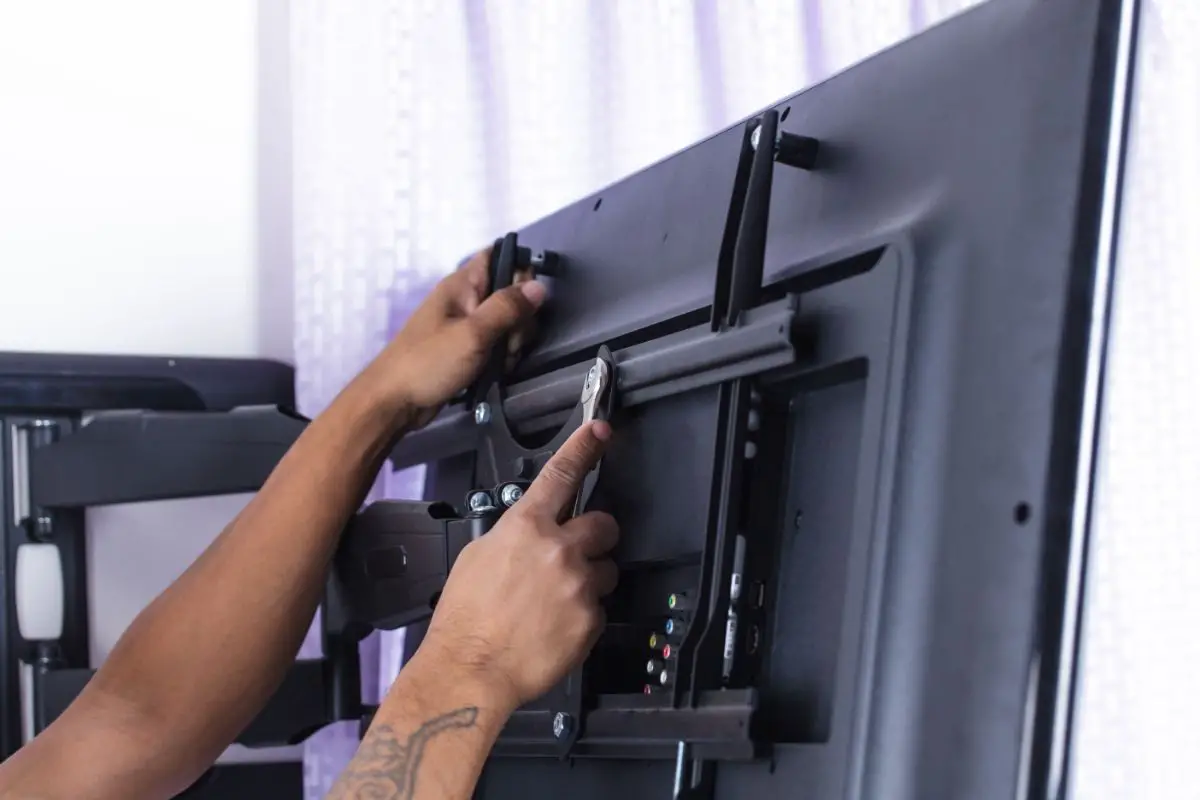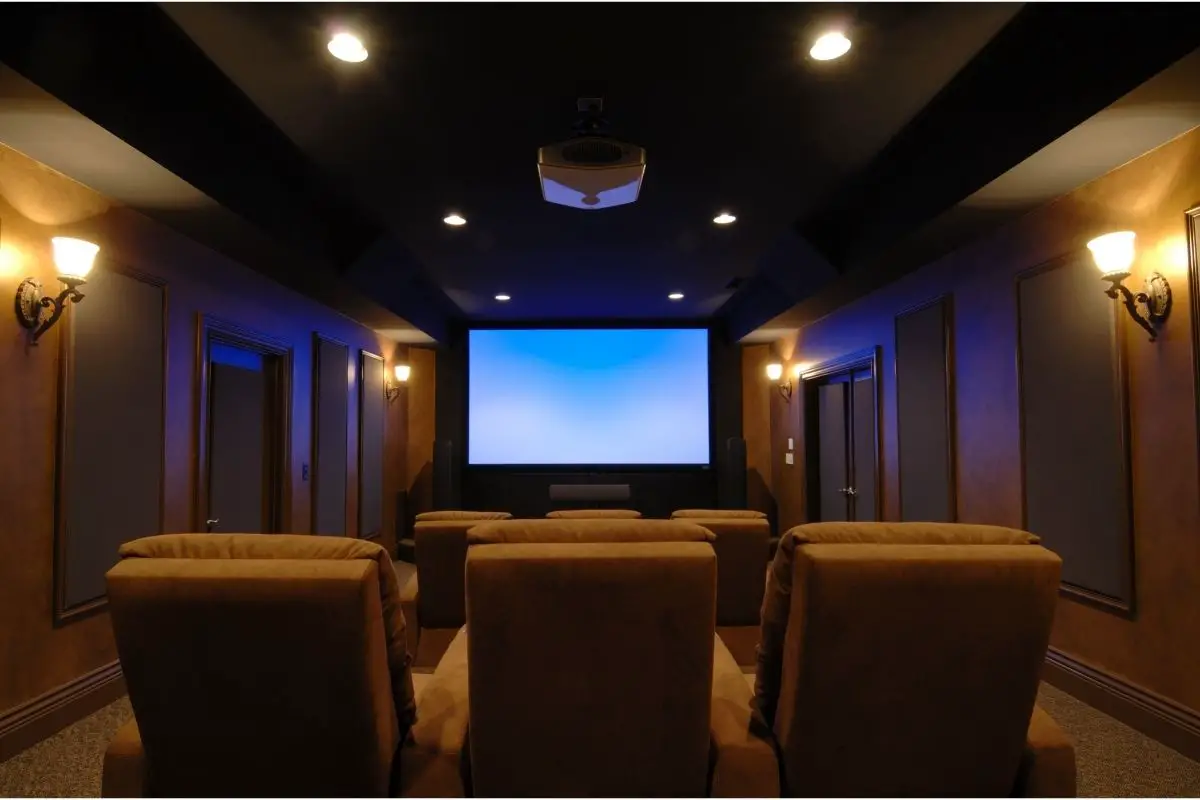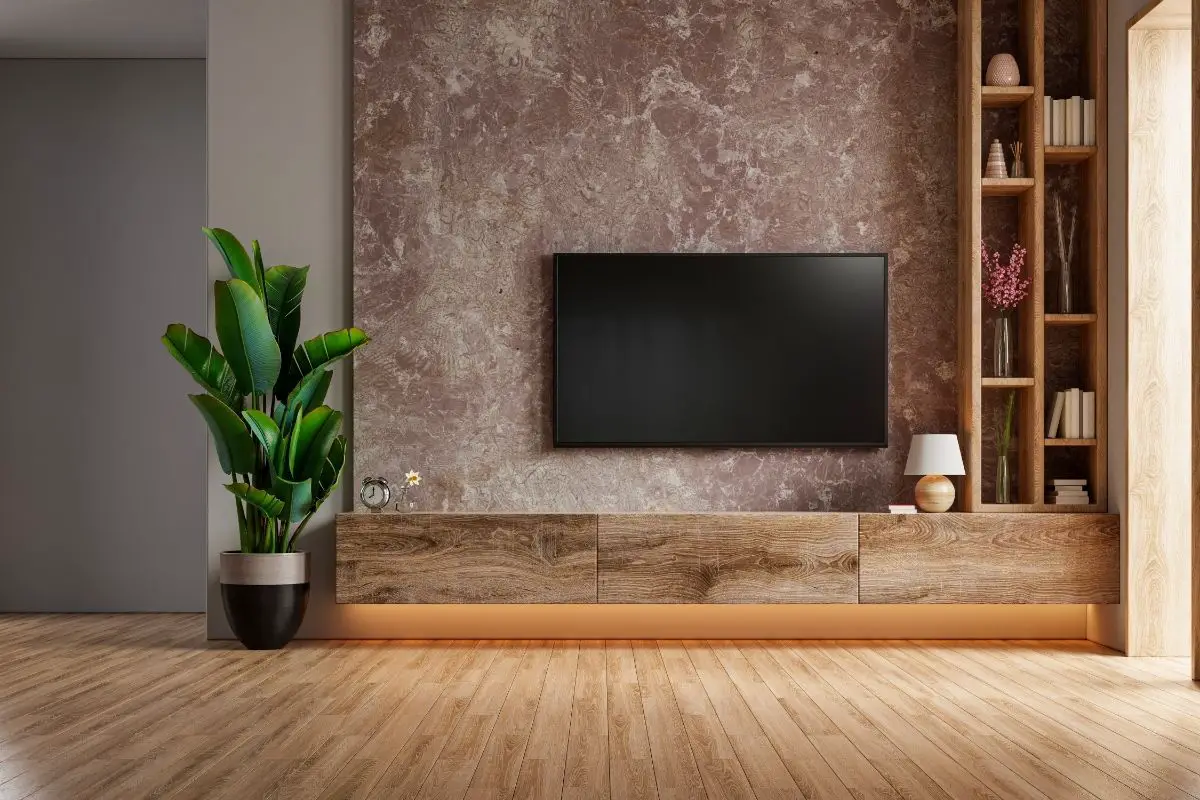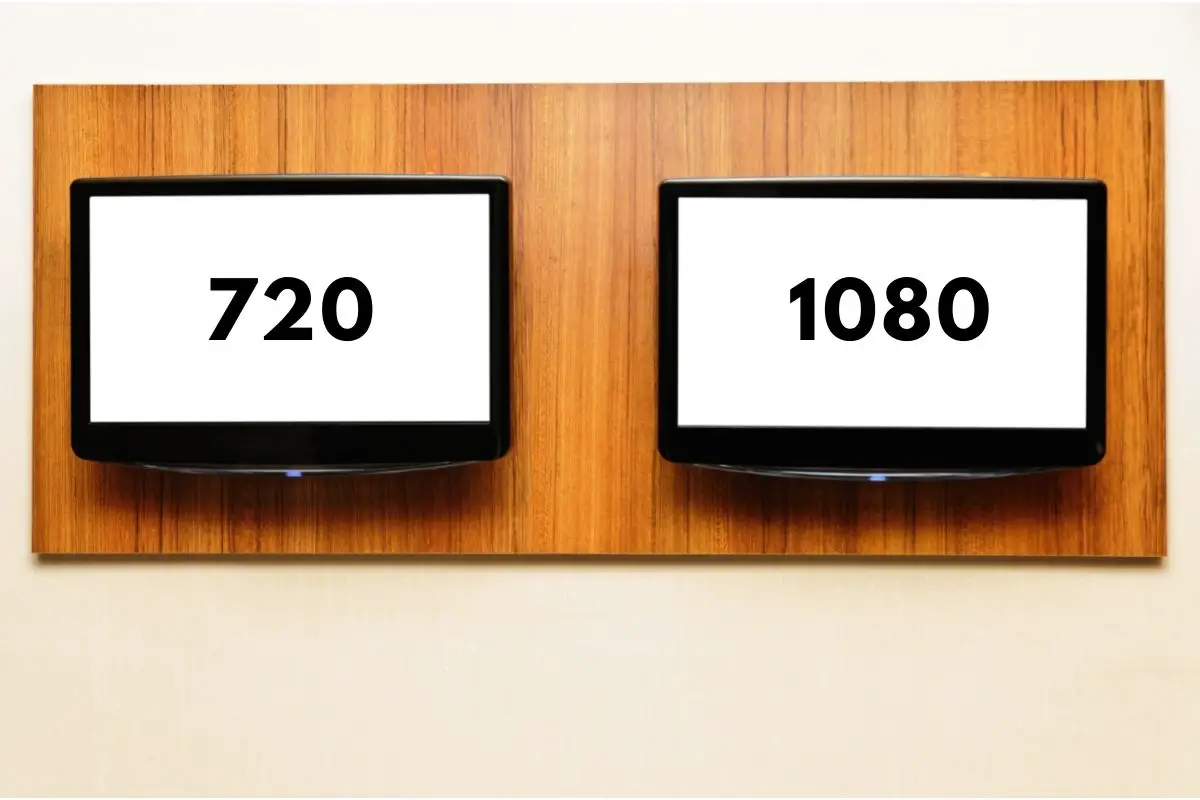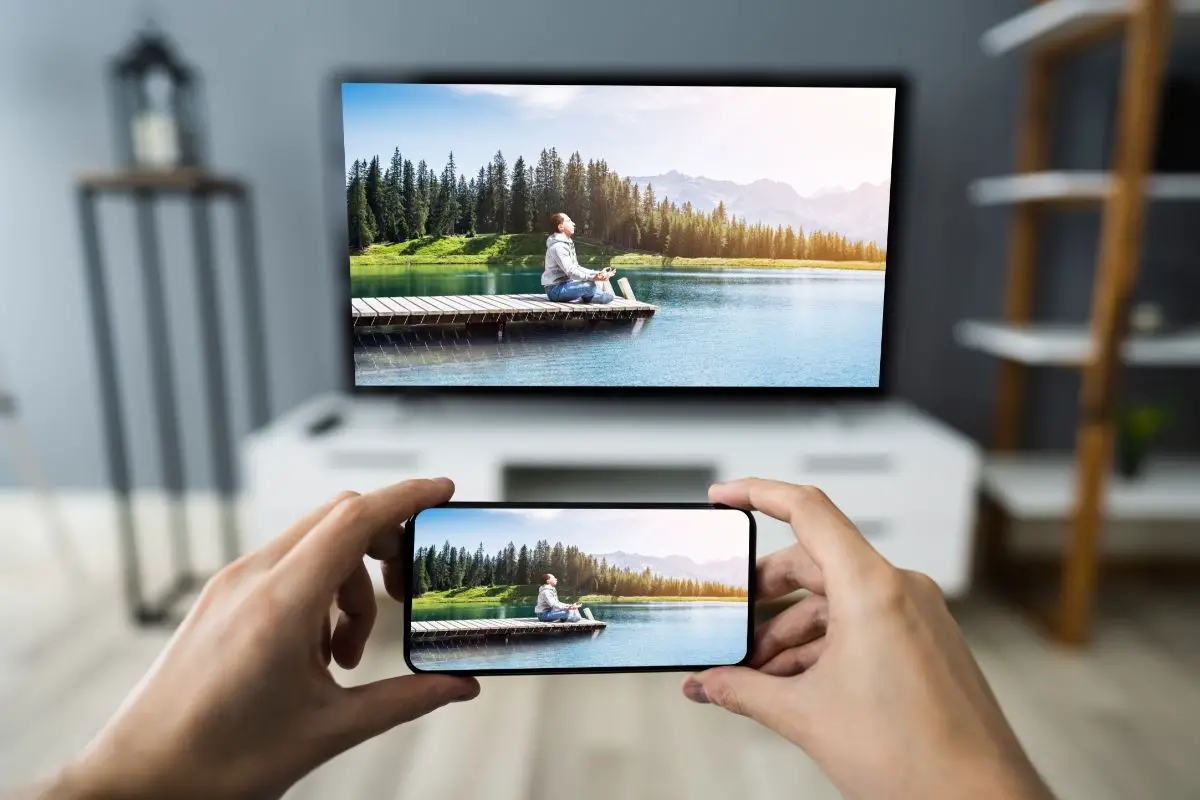What’s the use of having two soundbars if you can’t use them simultaneously?
Many different reasons may have led you to own two or more soundbars:
Maybe they were meant to be used in two different rooms.
Perhaps you’re looking for double the noise, twice the sonic experience, and need to figure out a way to make them work together.
Whatever your motivation might be, now that you own both devices, make the most out of it! Don’t know how to connect them together? Wondering whether or not you can play the same audio on both?
We’ll answer all your questions, and tell you how to proceed in this complete and exhaustive guide.
Can you connect 2 soundbars to a TV? [Step-By-Step]
What are soundbars most commonly used with?
TVs.
That’s why, if you own two soundbars, you’re probably going to be wondering if you can connect them both to the same screen. This will automatically give you twice the sound, and an ultra-performant home cinema installation.
Step 1: Connecting your soundbar to your TV with an optical cable
There are two main ways to connect your soundbar to your TV:
- HDMI-ARC
- Optical
The first one, HDMI-Arc, uses the same classic technology you would use to connect a gaming device to a projector or Apple TV to a screen.
Using an HDMI cable, you’ll connect your soundbar and television, from an HDMI into an HDMI out port. The signal goes both ways, which gives you the biggest advantage of this system:
Controlling your TV and soundbar using the same remote control.
However, if you’re looking to connect two soundbars to a TV, the easier option will be to use an optical cable. This sends a one-way, digital signal from your television to your soundbar. Most soundbars will come with one of these cables included.
You will need to keep using two remote controls, one to control your television, the other to control your soundbar. However, this will be your cheapest option, as we’ll see in this next step.
Step 2: Splitting the optical connection
If you want to connect two soundbars to one TV, you’re going to need to purchase one extra item.
This can be an optical cable splitter.
You’ll find them in most electronic stores, or even more easily online. The price depends on the features and quality of the splitter you’ll be buying. However, in most cases, it will remain relatively cheap, costing around 15$ USD.
The optical cable splitter will enable you to take the sound from one source – your television – and send it to two distinct destinations – your soundbars.
With some of the more sophisticated splitters, you’ll even be able to send the sound to three of four devices. Unless you own a particularly large amount of audio devices, this won’t necessarily be useful.
Step 3: Using two soundbars with an HDMI connection
If you decide to go for an HDMI connection, can you still use two soundbars with one TV?
The answer is yes, but expect to spend a little more.
HDMI splitters are also now sold on the market, but cost two or three times more than optical splitters. The prices remain nonetheless reasonable, ranging from 30 to 60$ USD.
The concept will be the same as the optical splitter: your HDMI signal will be divided in two and sent to both devices. However, with HDMI, one remote will stay in command of all devices. This, most notably, means you won’t be able to control each device’s volume separately.

Can you connect two soundbars together via Bluetooth?
Getting new cables can quickly clutter up your home theater setup.
What’s a solution to counter this?
Bluetooth.
Using this technology, you’ll be able to connect your TV to two different soundbars, and therefore play the same audio through both devices.
How to enable dual audio
The setting will take place from the audio source: your phone, computer, or TV.
Go into the settings, and look through the “audio” section. If your device is compatible, you should be able to activate a feature called “dual audio”.
With this, you’ll be able to select two available Bluetooth devices at once.
This means two things:
- You’ll need to pair both of your soundbars separately with your TV. On your soundbar, there should be a Bluetooth button. By pressing it, you’ll make pairing available.
- You’ll need to ensure that both your devices are in range to be connected. It’s therefore impossible to put them too far away from your screen.
Advantages of using 2 soundbars simultaneously
While reading this guide, you may wonder:
What’s the point of using two soundbars simultaneously?
Though it may seem counterintuitive, we’ll go over some of the main perks that come with a two soundbar setup:
Enhanced surround sound experience
Sound from left, right, in front and behind you: sounds nice, doesn’t it?
One of the main features offered by soundbars is the surround sound experience. This means that it feels like the sound is coming from everywhere around you like it would in a movie theater.
The most common surround sound systems are labeled with the number of speakers in the soundbar, 2.1, 5.1, 7.1… With two soundbars, you’ll double it. That’ll leave you with twice the volume, and more importantly, audio from nearly every corner of the room.
Listening in different rooms
Podcasts, binge-watching TV shows, Youtube videos…
More and more content doesn’t require your full attention and can be consumed just by listening. Therefore, you don’t necessarily need to be looking at your screen at all times.
Why not continue listening in on your program while taking a bath or cooking a good meal in the kitchen?
If both of your soundbars are connected using Bluetooth, this will now be possible!
Disadvantages of using two soundbars simultaneously
Any cool setup will come with its disadvantages.
Beyond installation issues, which you’ll easily overcome with this guide, the main difficulties you’ll have will relate to audio. Even if both of your soundbars are identical, the sound won’t necessarily always be exactly the same. This is something you might notice when listening.
Improper sound balance
Each soundbar is different.
The bass, the mid and high frequencies will never come out quite the same way, and with two soundbars, you’ll hear it even more.
Imagine if you place one soundbar on the left of your room, and the other one on the right. If the right soundbar is significantly more bass-heavy than the left soundbar, you might have a lot more sound coming to you from the right during action scenes. If the mid and high frequencies are stronger on the left, then music might come out better on that sound than on the other.
Fixing sound balance issues
There are a few tricks to adjust your soundbars so the audio comes out the same way in both of them.
This will only work if you use an optical connection. If you have an HDMI connection, one remote control will command both devices, therefore making individual changes impossible.
On your soundbar, go to the settings menu. There, you should see an “EQ” section. This will enable you to adjust bass and treble levels and have balanced audio.
If one soundbar seems louder than the other, you can also control the volumes separately if you’re using an optical cable.
Syncing issues
Though it is less and less common thanks to new technology, bad syncing can remain an issue.
This can happen if you’ve connected your soundbars using Bluetooth. Your connection may essentially be delayed, similar to what would happen if you were using a slow Wi-Fi connection.
What this will lead to is the audio coming out of one soundbar a few milliseconds before the other. A slight difference, but that you’ll hear instantly as it will create the illusion of an echo between your two devices.
Though this isn’t always fixable, you can always try to pair once again your two devices together. You can also attempt a hard reset or have them located closer to the other for the signal to be stronger.
You should also make sure there aren’t any interfering signals around. This includes LAN networks for gaming, but also microwaves.
Wrap-Up
Having two soundbars can enrich your home theater and give you an even more intense audio experience. More practically, it can also help you listen in from anywhere in your home.
Sure, it won’t necessarily be perfect. Setting up might require you to buy an additional piece of technology, like an optical or HDMI cable splitter. You might find the sound to be slightly imbalanced, the volume on one soundbar to be different than the other, or have trouble syncing both of your devices using Bluetooth.
But like most troubleshooting issues, you’ll almost always find a quick and easy fix to your problem (and hopefully thanks to this guide!).
So, no matter what, audiophiles who are always in search of new ways to enrich their sound system setup will be glad to have two soundbars.
Watching TV will truly be a more unique experience than ever before!
- How Do I Connect My Samsung Soundbar To Bluetooth? - February 5, 2024
- How To Connect Soundbar To TV With Optical Cable? - February 5, 2024
- How to Choose the Right Audio System for Your Home Theater Setup - April 25, 2023

